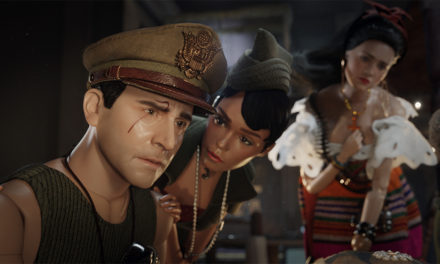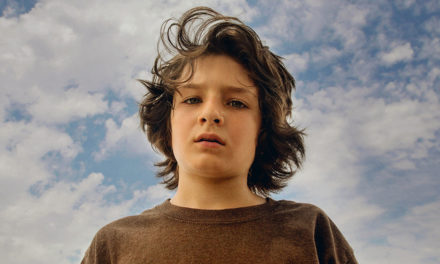As a Netflix sci-fi anthology series, “Love, Death & Robots” will inevitably draw comparisons to the uber-successful “Black Mirror,” but the two lack any similarities beyond genre. While “Black Mirror” unifies its disparate episodes with a common tone, “Love, Death & Robots” lacks such thematic cohesion. The result is an inconsistent series that hits outstanding highs and appalling lows.
Created by Tim Miller and acclaimed American director David Fincher, the 18-episode first season of “Love, Death & Robots” explores various unrelated stories, including an underground monster fight club, mech-clad farmers protecting their crops from aliens, a cyborg-led caravan heist, and a nighttime encounter between two salesmen and the ghosts of ancient fish.
While the animation, like most aspects of “Love, Death & Robots,” is inconsistent, these ever-changing visuals work to the series’ benefit. There are episodes rendered in 3D animation, 2D animation and even one that blends live-action and animation.
“The Witness” is arguably the most beautiful episode with its comic book-inspired style that is awash in neon light. Other standouts include “Three Robots,” which illustrates a beautiful vision of a post-apocalyptic Earth, and “Zima Blue,” which displays a vibrant, angular 2D style. The animation only really falters in “Shape-Shifters,” in which the character models and animation look stiff and inhuman, as if pulled from an early 2000s video game. This rigid style isn’t up to par with the other episodes and is an unfortunately jarring change.
For better and for worse, each episode is less than 17 minutes in length. Many episodes struggle to tell a satisfying story in this limited time frame. The biggest offender is “When the Yogurt Took Over,” which runs a measly 6 minutes and only scratches the surface of its premise: Earth dominated by sentient yogurt. Still, a few episodes excel within their limited run times. In particular “Sonnie’s Edge” and “Lucky 13” masterfully balance exposition and plot.
In most episodes, the limited run time is spent barreling toward a last-minute twist that rarely pays off. “Sonnie’s Edge” is the most effective example of this formula, while “The Dump” is probably the biggest failure, hinging entirely on a twist that unravels in the episode’s final 30 seconds. The twist itself is so unimaginative and predictable that the entire 10-minute episode feels like a waste. With such little time per episode, “Love, Death & Robots” banks on big twists to put a compelling capstone on each narrative. While the twists that land are immensely satisfying, the many that fail result in boring episodes that slowly roll toward easily foreseen conclusions.
Even the episodes that break this twist-based formula are hit or miss. “Sucker of Souls” and “The Secret War” fall short of creating any real plot, devolving into a tired scenario where unremarkable characters flee from a generic monster. In particular, “Sucker of Souls” is a massive failure — its 13-minute run time begins with a useless in medias res opening where the characters are running from an unseen monster. The episode then flashes backward in time, where it flails through the remainder of its length without any clear direction.
Even for a series that brands itself as NSFW, the nudity and gore in “Love, Death & Robots” seem gratuitous. “The Witness” and “Good Hunting” are especially bogged down by unnecessary, overzealous nudity while “Sucker of Souls” and “Shape-Shifters” sacrifice plot for blood splatters.
However, the occasional episode beats out the perfect rhythm of shock and drama. “Helping Hand” is so gruesome that it’s nearly impossible to watch, but its gore accentuates the intensity of the struggle that Alex, an astronaut, faces as she tries to survive while drifting alone in space. “Sonnie’s Edge” features nudity, but doesn’t fixate on it — unlike in “The Witness,” which sees its protagonist run around completely nude for the majority of the episode.
Ultimately, “Love, Death & Robots” may carve itself a unique niche in the sci-fi anthology genre thanks to its bold animation choices, but it has little else to offer. Every time it nails an episode (see “Sonnie’s Edge” and “Lucky 13”), it fails to stick the landing on the next one. The series could have benefitted from giving some of its episodes the axe in favor of greater focus on its standouts.
“Love, Death & Robots” tries to be too many things, and, in doing so, fails to be the one thing it needs to be: entertaining. Some episodes are worth checking out, but the series itself is a tiresome slog.
Grade: D+
Calen MacDonald (22C) is from Palmetto, Fl. and is double majoring in English and creative writing and neuroscience and behavioral biology. Outside of the Wheel, he is the recruitment chair for Emory Crew and a school captain for Emory Reads. If he had any free time, he would spend it looking for free food and reminding everyone how tall he is (he's 6'8").





